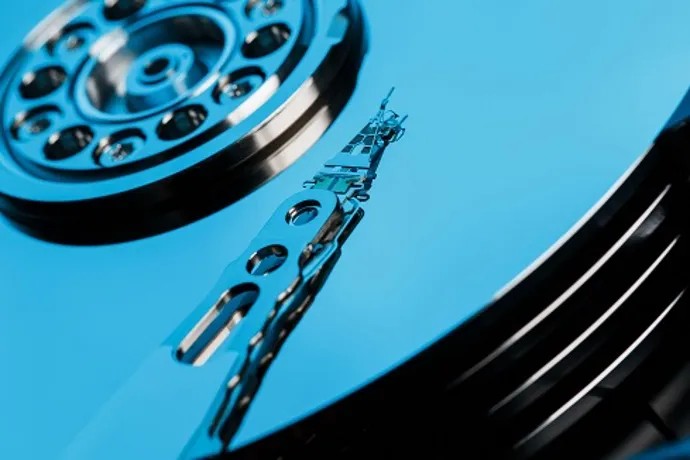摘要: Ensuring long-term data integrity has challenged researchers for decades. Here's a look at where data storage technology is heading next.

▲Credit: Grechanyuk Aleksandr via Alamy Stock
Magnetic drums, tape drives, floppy disks, hard disks, compact discs, digital video discs, and numerous other technologies have all, at one time or another, been widely used as storage media. Today, the march toward fast, reliable, affordable, and durable storage media continues at full speed.
With new storage technologies arriving at a breakneck pace, here's a quick look at how the data storage industry is likely to advance over the next few years.
The Current Outlook for Storage Tech
Technology, deployment model, and cross-industry issues are all contributing to the evolution of data storage, according to Tong Zhang, a professor at the Rensselaer Polytechnic Institute, as well as co-founder and chief scientist for ScaleFlux. An uptick in new technologies and further acceleration in data generation growth are also moving storage technologies forward. Deployment models for compute and storage must evolve as edge, near-edge, and IoT devices change the landscape of IT infrastructure landscape, he says. “Cross-industry issues, such as data security and environmental impact/sustainability, are also major factors driving data storage changes.”
Four distinct factors are currently driving the evolution in storage technology: cost, capacity, interface speeds, and density, observes Allan Buxton, director of forensics at data recovery firm Secure Data Recovery Services. Hard disk manufacturers are competing with solid-state drive (SSD) makers by decreasing access and seek times while offering higher storage capacities at a lower cost, he explains. “Solid-state manufacturers tout their higher I/O speeds and the ability to rapidly adopt new form factors.” Both SSD and hard disk makers tout improved reliability, but there is no clear-cut winner in real world tests, Buxton notes.
Tape Cartridges
Tape technology remains firmly ensconced in its enterprise archival role, Buxton says. Most makers of LTO-7 and LTO-8 tape drives have roadmaps that will take their product liners into even higher capacity storage, he says.
Data cartridge technology will continue to show incremental progress in terms of storage density and bit cost, driven by the continuous improvement of magnetic tape-reader and read-channel signal processing, Zhang says.
Hard Drives
Hard-disk technology will continue to migrate toward shingled magnetic recording technology in an effort to sustain the incremental improvement of storage density and bit cost, Zhang states. “Host-managed shingled HDDs will be widely deployed in data centers,” he says. “Dual-actuator HDDs may also gain traction.”
While faster interfaces remain in development, Buxton predicts that the big push in hard disk storage will continue to capacity and power efficiency. “Meanwhile, the next big thing is Heat-Assisted Magnetic Recording (HAMR), which is just due within the next year or so.” Designed to replace Perpendicular Magnetic Recording (PMR), HAMR will require only a minimal increase in hard-disk production costs while boosting capacities within existing form factors.
Meanwhile, several hard-disk manufacturers have already started looking into manufacturing enterprise-class hard disks filled with helium, which offers platters a less dense spinning environment. “This means that the disks can offer the same read/write speeds of 7,200 or 10,0000 rpm using less power,” Buxton says.
Solid-State Drives
In the SSD storage sector, Zhang expects that quad-level cell (QLC) technology will be rapidly embraced as a new tier in the data storage hierarchy. QLC's popularity is because it offers more capacity at a lower cost than its triple-level cell (TLC) predecessor.
SSDs in general will continue to improve as their interface buses improve. “Manufacturers are now taking advantage of PCI-Express 4.0 bandwidth improvements that offer . . . faster read and write speeds when utilized with the appropriate SSD,” Buxton says. The push to increase capacities hasn't stopped, either. Buxton predicts that QLC cells will eventually give way to penta-level cells (PLCs).
While computational storage is still in its early stages, the benefits it can bring to compute, storage, and network efficiency will deliver massive value to users, Zhang says. “Certain transparent computation functions, such as transparent compression and encryption, will be widely available in enterprise-grade SSDs,” he predicts.
Storage Technologies: Looking Forward
Zhang anticipates a promising future for cutting-edge storage technologies, including DNA storage. “Being actively researched, DNA storage shows promise as an ultra-low-cost archival storage technology,” he says. Yet many technological challenges remain to be conquered before DNA storage can become a marketable technology. “In the foreseeable future, magnetic recording and flash memory remain the only commercially viable data storage technologies,” Zhang notes.
While DNA-based storage continues to be explored, so does research into other advanced areas, such as light and fluorescence. “Discs aren't dead either, with some recent press given to a CD/Blu-Ray form factor that can store terabytes at a time,” Buxton says. “Whether any of these [approaches] make it to market in a manner that can compete with existing technologies remains to be seen,” he adds.
轉貼自Source: informationweek.com
若喜歡本文,請關注我們的臉書 Please Like our Facebook Page: Big Data In Finance


留下你的回應
以訪客張貼回應